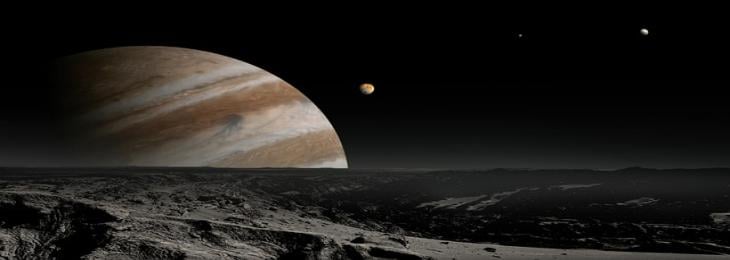
Juno probe has delivered the noise recording of the moon along with some pictures of Jupiter.
The audio recording of the atmosphere on Jupiter’s natural satellite Ganymede has been released by NASA. This recording has been captured by the Juno satellite. The satellite captured some photographs of Ganymede’s Surface and Jupiter. This audio file contains a recording of the surrounding of Ganymede’s environment, which sounded like a mechanical disturbance and high radio transmission noise.
Ganymede has been the largest satellite in the solar system. The surface of this moon is mainly covered in an Icey environment. NASA has been conducting Juno mission on the Ganymede for the last decade. The control team of the Juno spacecraft has managed to record the surround sound of the satellite. The researchers simply described the sound as a slow recording of the R2-D2 robot. Jet Propulsion Labs had posted the audio clip on NASA’s official website. The duration of this audio track is 50 seconds. This audio clip is available on the internet to listen to and study.
The Juno spacecraft utilized their waves instruments to capture this audio. This waves instrument estimates the magnetic and electric waves generated in the magnetosphere of Jupiter. Scientists successfully recovered the audio frequency waves gathered by the satellite. This audio recording is made up using the frequency of various emissions into the audio range, which makes this track audible to average ears.
In the American Geophysical Union’s fall meeting, lead scientist of Juno mission, Scott Bolton presented the audio recording. Bolton stated that this soundtrack is wild enough to make anybody feel like they are riding with Juno probe on Ganymede. If this audio is listened to closely enough, that people can hear a short shift in high frequency around the middle of the audio track. This shift represents the region change in the magnetosphere of Ganymede. The Juno spacecraft has managed to cover around 645 miles of the surface of Ganymede. The average speed of this probe has been recorded as 67,000 kilometers per hour. The probe is managed to capture photographs of the surroundings while recording the audio on the Ganymede.






